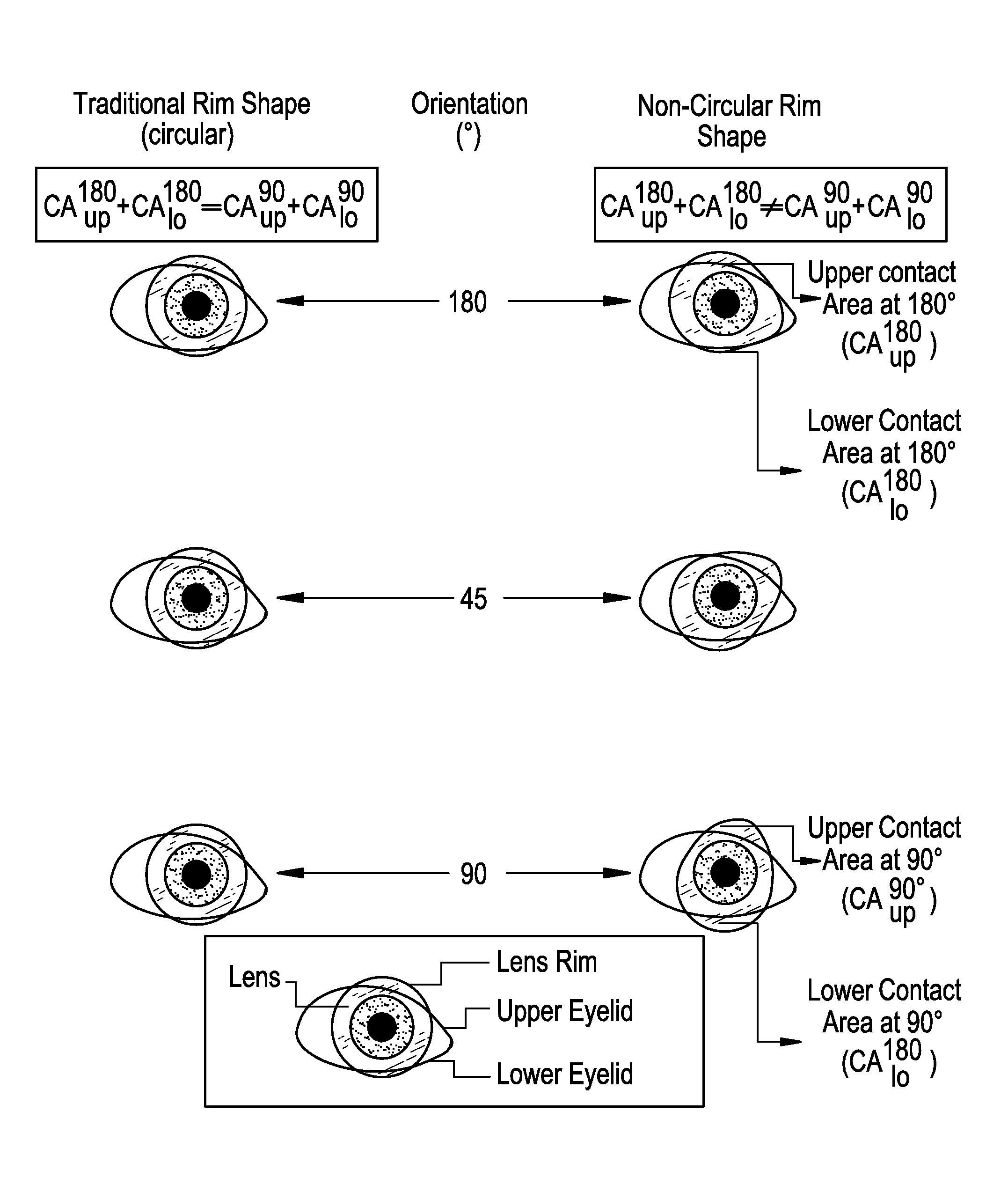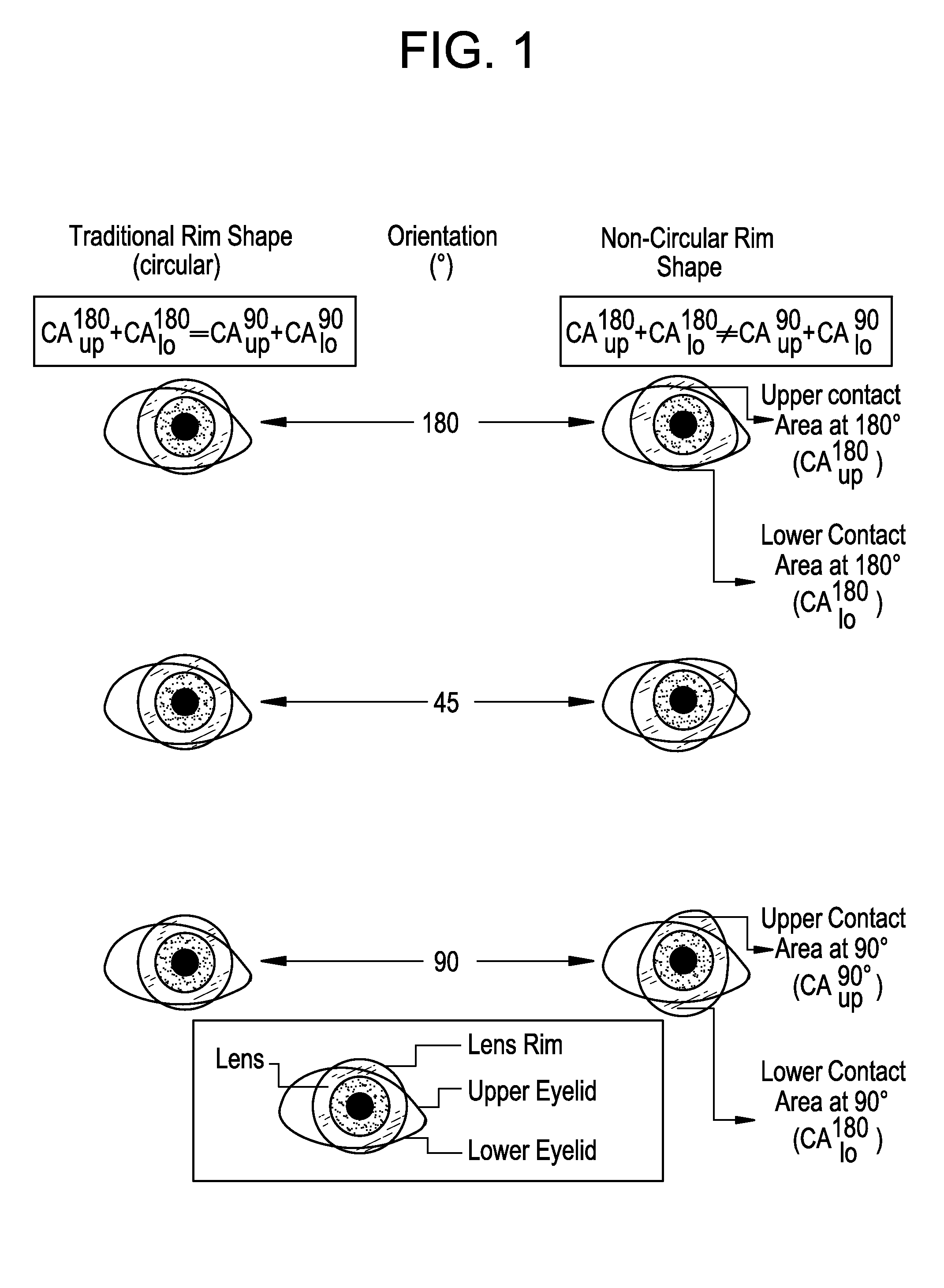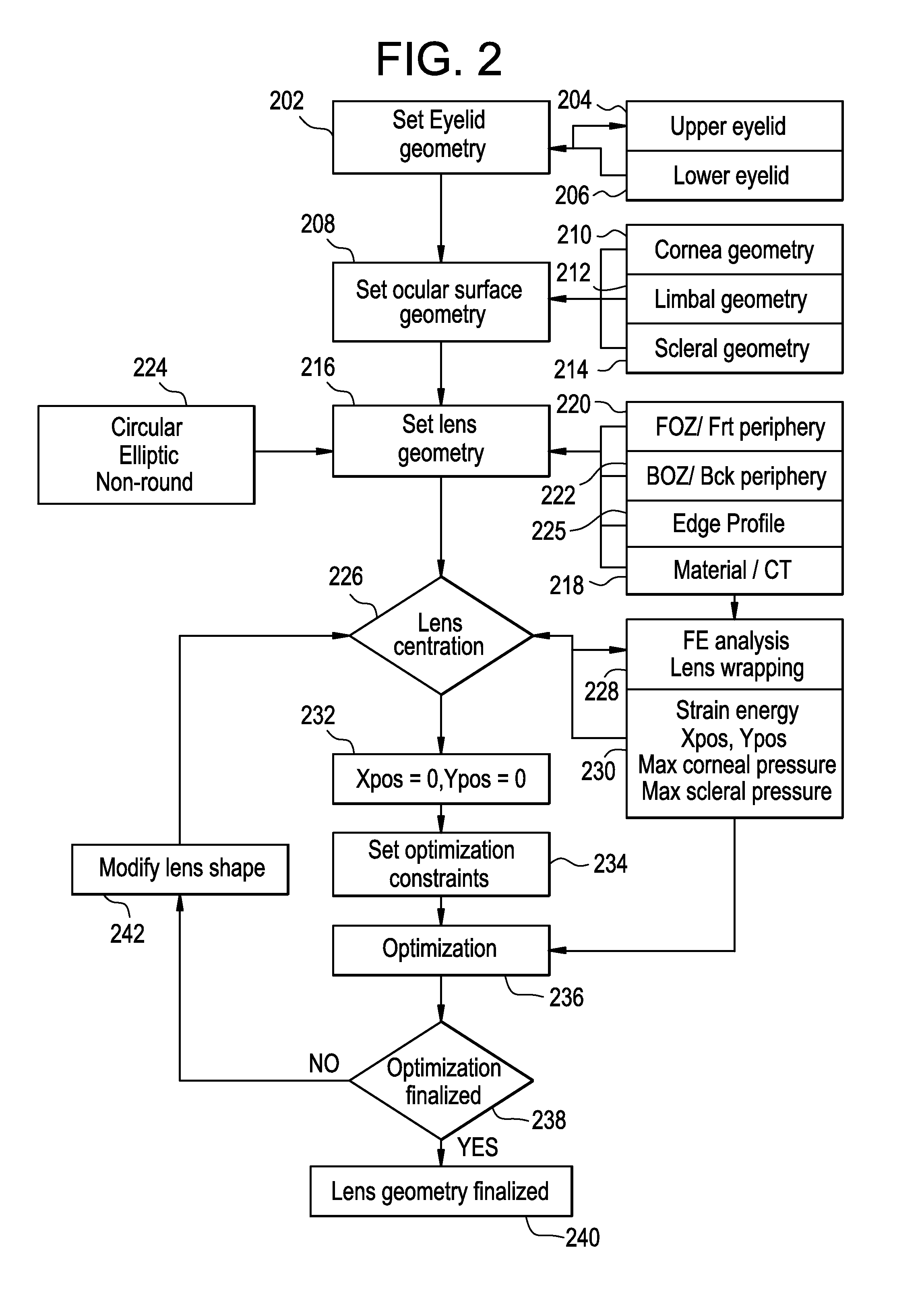Method for designing non-round soft contact lenses
a soft contact lens and design technology, applied in the field of non-round soft contact lens design, can solve the problems of contact lens use, no design is currently taking, and the eye tends to rotate, so as to improve the stability of the lens, improve the effect of rotation and centrifugation on the eye, and enhance the visual acuity
- Summary
- Abstract
- Description
- Claims
- Application Information
AI Technical Summary
Benefits of technology
Problems solved by technology
Method used
Image
Examples
example 1
[0050]A prior art contact lens 502 for astigmatic patients having a circular shape is illustrated in FIG. 5A and was designed utilizing conventional contact lens design software with the following input design parameters:[0051]Sphere Power: −3.00 D[0052]Cylinder Power: −0.75 D[0053]Cylinder Axis: 180 deg[0054]Lens Diameter: 14.50 mm[0055]Front Optical Zone Diameter: 8.50 mm[0056]Back Optical Zone Diameter: 11.35 mm[0057]Lens Base Curve: 8.55 mm[0058]Maximum Thickness Differential Within The Stabilization Zone: 0.270 mm.
The stabilization zone is an extra thick zone added to the thickness profile of that contact lens. This contact lens 502 is a typical example of a substantially circular toric lens. As the contact lens edge geometry is circular, the lens-lid contact area difference remains at zero independently of the orientation of the contact lens 502 on the eye. This design is presented as it is a good representation of what may be found among the commercially available contact len...
example 2
[0059]A contact lens 504 for astimatic patients having an elliptical shape is illustrated in FIG. 5B and was designed utilizing conventional contact lens design software with the following input design parameters:[0060]Sphere Power: −3.00 D[0061]Cylinder Power: −0.75 D[0062]Cylinder Axis: 180 deg[0063]Lens Horizontal Diameter: 15.50 mm[0064]Lens Vertical Diameter: 13.50 mm[0065]Front Optical Zone Diameter: 8.50 mm[0066]Back Optical Zone Diameter: 11.35 mm[0067]Lens Base Curve: 8.55 mm[0068]Maximum Thickness Differential Within The Stabilization Zone: 0.180 mm.
[0069]The stabilization zone of contact lens 504 has the same profile as the stabilization zone of contact lens 502 (Example 1); however, the magnitude has been reduced to sixty-six (66) percent of the maximum thickness differential of the contact lens 502. The location of maximum thickness of the stabilization zone follows the edge contour of the contact lens 504. FIG. 5B illustrates a contour plot of the normal thickness of c...
example 3
[0070]A contact lens 506 for astigmatic patients having a non-round shape is illustrated in FIG. 5C and was obtained, as described below, and designed utilizing conventional lens design software with the following input parameters:[0071]Sphere Power: −3.00 D[0072]Cylinder Power: −0.75 D[0073]Cylinder Axis: 180 deg[0074]Lens Diameter: 14.50 mm[0075]Front Optical Zone Diameter: 8.50 mm[0076]Back Optical Zone Diameter: 11.35 mm[0077]Lens Base Curve: 8.55 mm[0078]Maximum Thickness Differential Within The Stabilization Zone: 0.180 mm.
[0079]The non-round edge contour of contact lens 506 is defined by the method set forth above utilizing four control points. The coordinates of those control points are given in FIG. 6. The stabilization zone of contact lens 506 also has the same profile as the stabilization zone of round contact lens 502 (Example 1), and once again the magnitude has been reduced to sixty-six (66) percent of the maximum thickness differential of the round contact lens 502. T...
PUM
 Login to View More
Login to View More Abstract
Description
Claims
Application Information
 Login to View More
Login to View More - R&D
- Intellectual Property
- Life Sciences
- Materials
- Tech Scout
- Unparalleled Data Quality
- Higher Quality Content
- 60% Fewer Hallucinations
Browse by: Latest US Patents, China's latest patents, Technical Efficacy Thesaurus, Application Domain, Technology Topic, Popular Technical Reports.
© 2025 PatSnap. All rights reserved.Legal|Privacy policy|Modern Slavery Act Transparency Statement|Sitemap|About US| Contact US: help@patsnap.com



